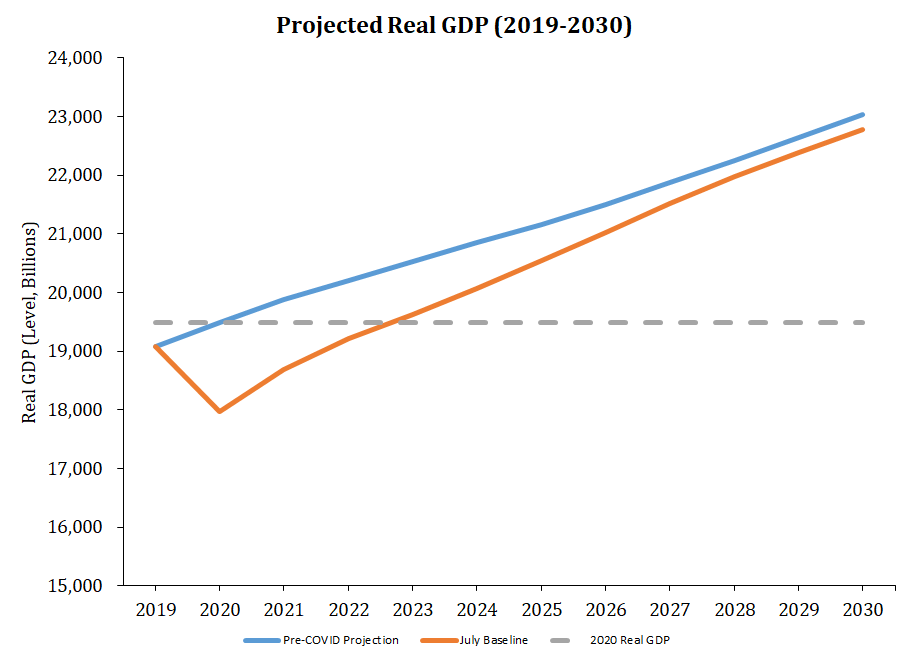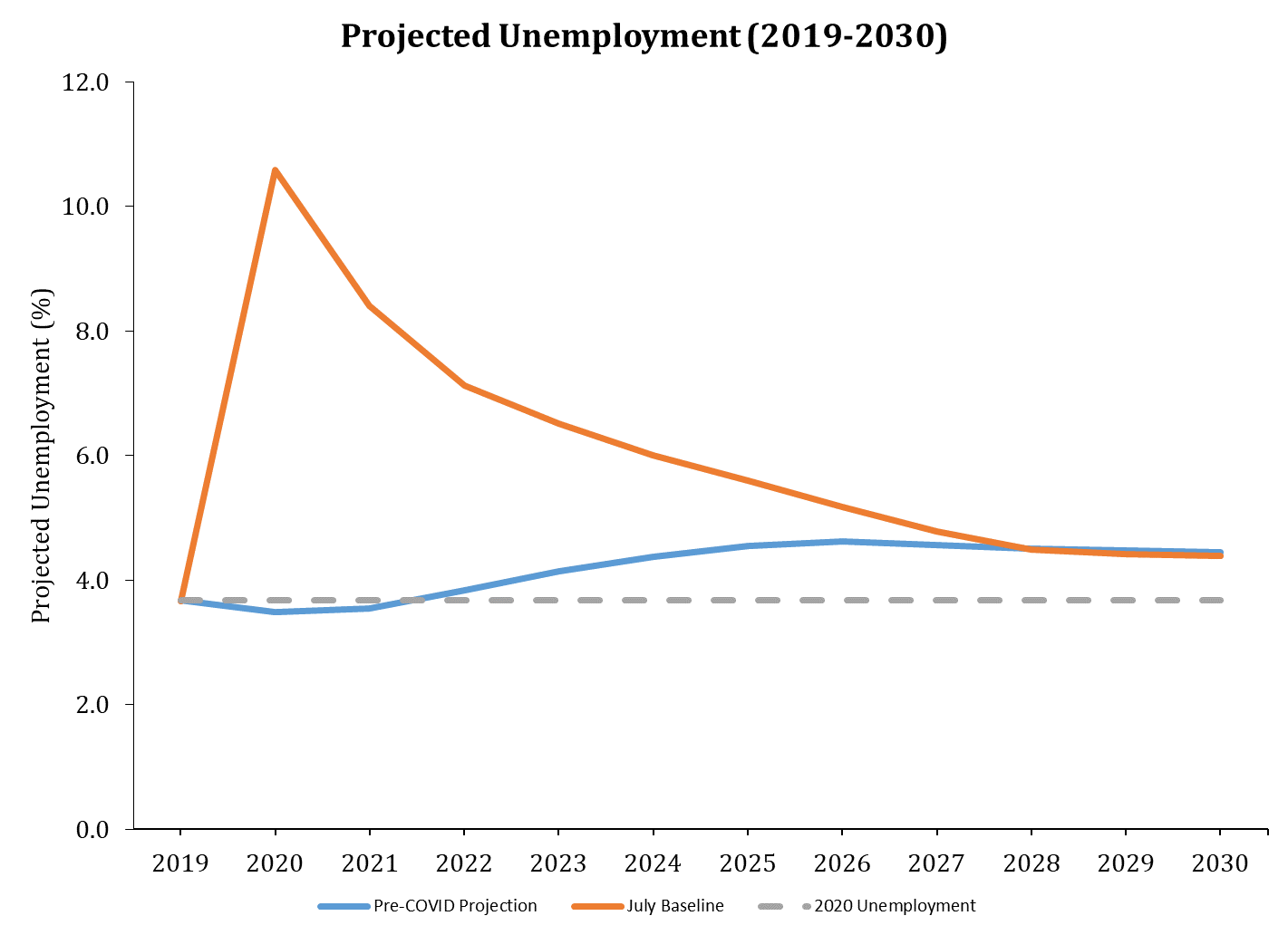Insight
July 2, 2020
Highlights of CBO’s Updated Economic Outlook
The Congressional Budget Office (CBO) released an update to its periodic economic outlook, which provides Congress with a 10-year economic forecast and underpins the agency’s budget projections. Typically, these estimates are paired in a single report released twice yearly. The extraordinary effects of the COVID-19 on the economy have necessitated that the agency update its economic estimates as Congress considers policy responses to the health and economic challenge posed by the pandemic. In May, CBO released an interim update that incorporated the effects of the pandemic on key economic indicators over the next two years. Today’s report provides Congress and the public with a more complete 10-year economic outlook and incorporates additional data. CBO has also stated that supplementary detail will be forthcoming.
By the Numbers
CBO projects real annual gross domestic product (GDP) growth to average 1.7 percent over the budget window, which is identical to the average rate of growth CBO estimated in its pre-COVID outlook. But this statistical coincidence belies a substantially diminished economy. CBO forecasts that unemployment will not return below 4 percent within the decade, which is consistent with CBO’s pre-COVID projection. CBO also projects extraordinarily low interest rates in the near and medium term, with interest rates somewhat converging with CBO’s previous estimates near the end of the decade.
Road to Recovery
In January, CBO estimated that the U.S. economy would continue to enjoy moderating, real GDP growth in the near-term, followed by persistent real growth of below 2 percent per year. That outlook was generally consistent with those of the Blue Chip forecast and those published by members of the Federal Reserve. The historic shock to the economy from the pandemic plainly sundered that outlook.
Under CBO’s most recent projections. The economy would recover to the level of 2020 real GDP by 2023.
CBO also projects, however, that the economy will remain below potential until 2028 – essentially when the U.S. economy will be fully “recovered.”
By 2028, CBO projects unemployment will trend down to 4.5 percent, at which point CBO’s pre- and post-COVID forecasts converge. As noted, however, CBO does not estimate that unemployment will return to pre-COVID levels.
Tremendous uncertainty attaches to these forecasts that is more the province of policymakers than forecasters. The economy will depend heavily on the disposition of the virus – that outlook remains profoundly uncertain. Further, CBO is required to assume current law prevails throughout the budget window. Perhaps most significant, this outlook must assume the eventual depletion and termination of the Coronavirus Aid, Relief, and Economic Security (CARES) Act and related assistance as presently scheduled, as well as scheduled tax increases under the Tax Cuts and Jobs Act (or TCJA), among other considerations. Today’s report suggests that despite recent improvements relative to historic shocks, the economy remains severely impaired, and it will require years and sound policy to weather it.













